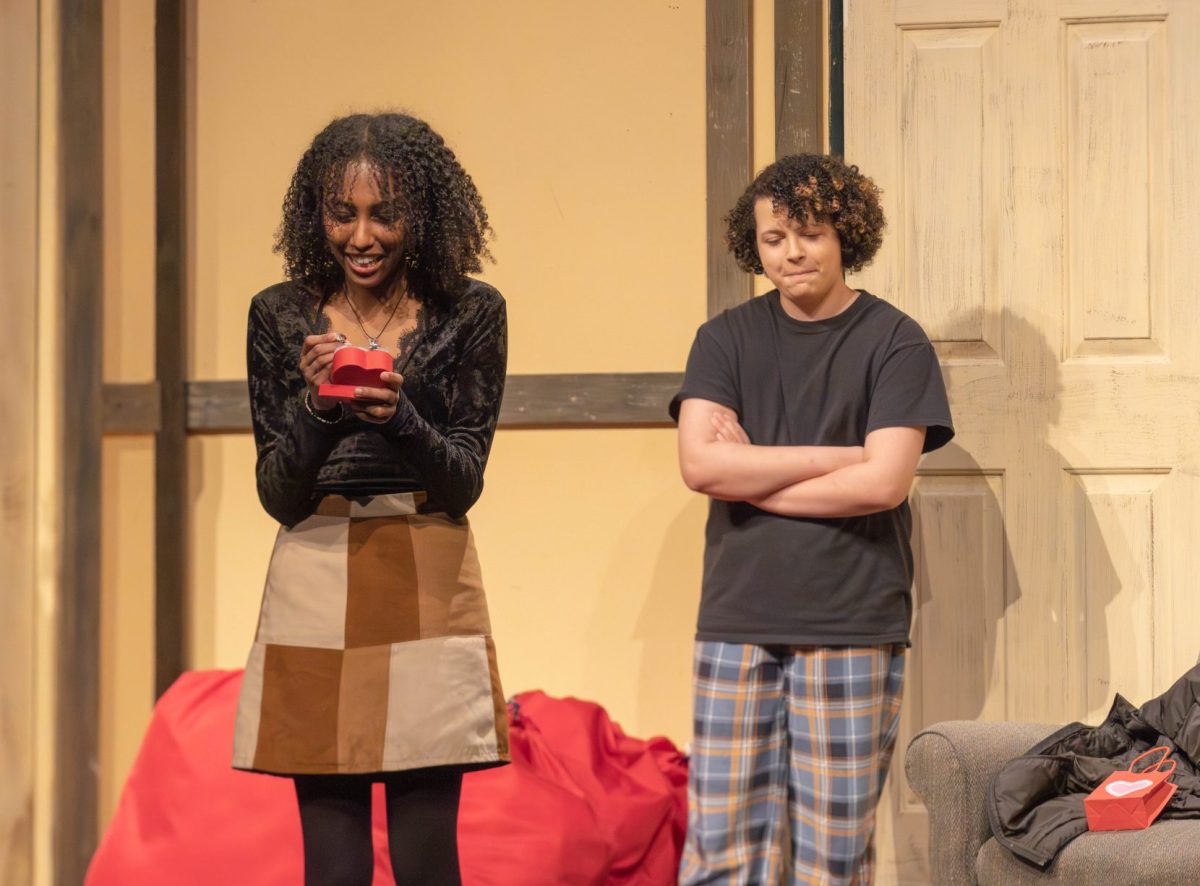I distinctly remember being told that we had just run through our last packet of Craisins. Yet there I was, three days into spring break, kneeling on the kitchen floor with piles of packets in front of me, digging through them like a madman.
Of course, a voice in the back of my head tried to get me to see sense, but I wasn’t going to be swayed. There had to be just one more pack of Craisins somewhere in here. I needed them. How else was I supposed to get through the next hour of AP Statistics review?
After 20 minutes of senseless searching, I finally conceded that I wasn’t going to find my Craisins by myself. So, like any extremely stubborn person who refuses to face the facts, I called my mom to ask her where the last pack was hidden.
“I already told you. We ran through our last pack last week,” she said.
At those words, I let out a breath. No matter how much I had tried to wish them into being, I finally had to face the facts. There wasn’t another pack left, and I wouldn’t be getting my Craisins today.
Now, I’m sure we have all gone through a phase of denial in our lives in which we refuse to accept the facts that are right in front of us. However, my little moment of insanity over a pack of Craisins got me thinking about a time much earlier in my life, when my denial phase went on for a lot longer than half an hour.
In my mind, it all started in second grade. That year, like any second-grade class, we were introduced to a lot of art projects, and the concept of colors came up constantly.
As kids introduced themselves to each other, the question would always come up. “What is your favorite color?”
Through the years, I’ve gotten that question quite a bit, and for the longest time, I had absolutely no idea how to answer it. And, I had a question of my own. What are colors?
Having only light and shadow perception, color means nothing to me beyond just another word. Yet, in second grade, I decided I knew exactly what colors were.
Early in the year, we began studying butterflies as part of our science unit. Each one of us had our very own caterpillar in a jar that we were to observe as it went through its phases to becoming a butterfly.
In an attempt to make sure I felt like I was a part of the class, my teacher gave me my own little butterfly jar, and I had a new best friend who I called Ed. Not exactly sure why I decided that would be the name, but I did.
Not only did Ed become my new best friend, but they also became the subject of my intense “scrutiny.” Every day, when our class got out their magnifying glasses to observe their butterflies, I did the same. Suddenly, the blind kid could see the butterfly perfectly. As I held my magnifying glass to the jar, my eyes practically touching the glass, I listened to my classmates around me to see what kind of things they were saying.
“The wings are so pretty,” I said.
“Oooh, Ed is growing.”
This was the beginning of a few months of absolute chaos for my parents, and ophthalmologist too, I suppose, as I decided that I could suddenly see. A few weeks into my butterfly adventure, I had an eye doctor’s appointment.
For reasons I will never understand, each one of my eye doctors over the years have made me attempt to read the alphabet chart, even though they know exactly what will happen. Well, that appointment, I began a tradition that continues to this day of guessing the letters on the alphabet chart. Through the years, I’ve developed a knack for guessing at least one letter correctly, and in some cases, I went so far as to memorize the charts, just to mess with my examiners.
Of course, the first time I did this, everyone around me was extremely confused. Could it be by pure chance that I had correctly identified three letters in a row? By the end of the appointment, I had tried seven different pairs of glasses, all with varying degrees of increased power, and my ophthalmologist decided to give me a new pair of glasses with slightly higher power than I had previously had, just in case.
The chaos continued after that. I listened to those around me, learning to associate colors with certain objects, attempting art projects in class without any tactile modifications, and even going so far as to ask my parents in earnest for mechanical pencils that I then carried everywhere with me.
I asked friends and teachers to describe print letters to me, and when that didn’t work, I asked them to guide my hands through the motions of printing my name. I put forth an immense amount of effort to memorize those movements, and every chance I got, I could be found with a pencil and paper in hand, trying with everything I had to recreate the motions that teachers and friends had guided my hands through.
Over the years, that attention to detail has definitely dissipated, and I can barely draw a straight line when I’m asked to. However, those few months of living in denial of the facts that were right in front of me taught me a few important lessons.
1. It’s one thousand percent easier to be yourself than what you think the world wants you to be.
2. We’re all unique in our own way, and difference is not a bad thing.
3. Changing a core part of who you are to “fit” into society a little better is never going to work.
4. The world expects you to know certain colors and objects associated with them, but read enough books, and everything is right there.
5. Shoving a magnifying glass into your eyeballs as hard as possible won’t provide miracle vision, but the glass can break, and that hurts.
So, what am I trying to say by telling this extremely elaborate story? Simply this: be yourself, because that is exactly who the world needs you to be.







